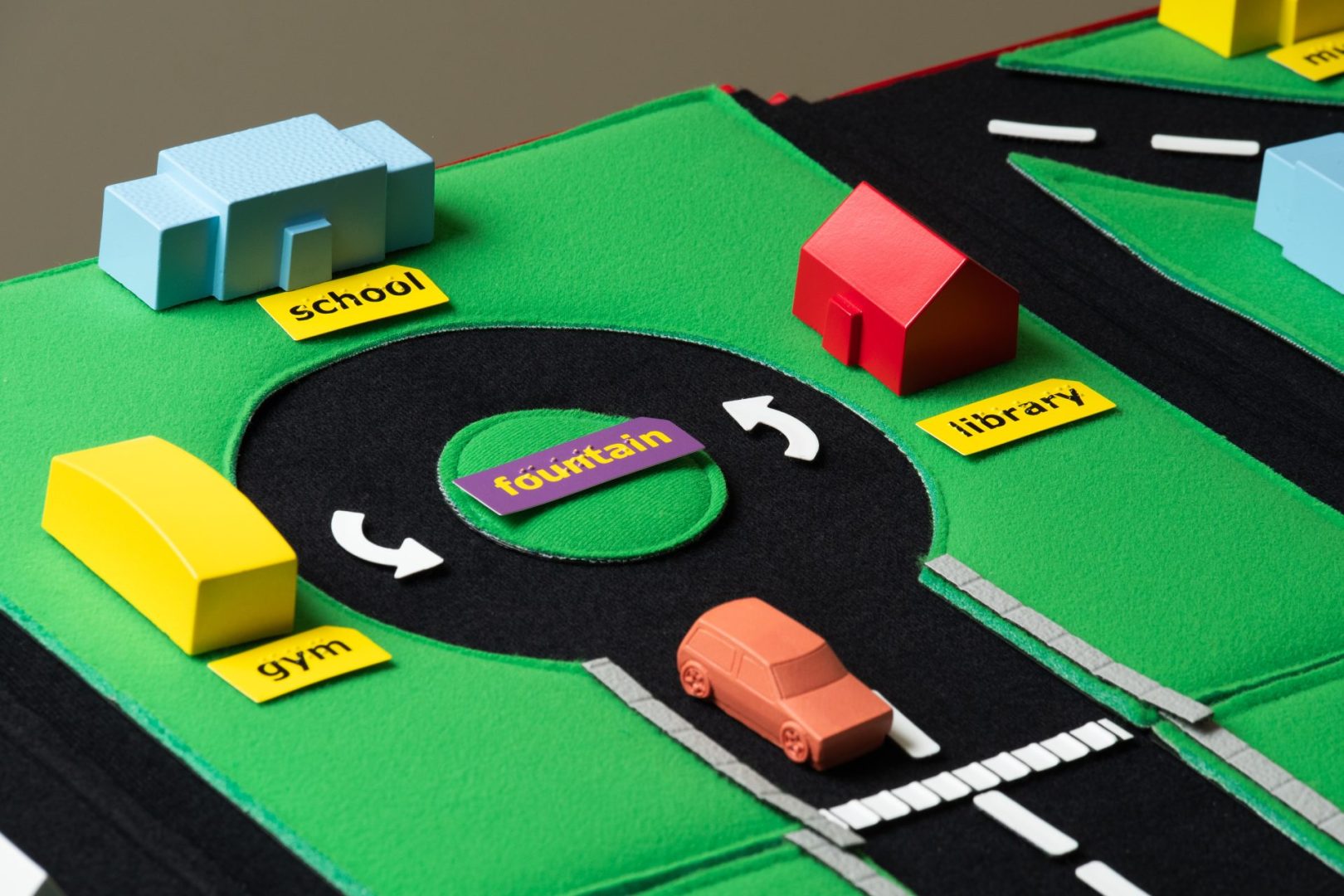Make Maps Come to Life with Tactile Town

A fundamental skill for every traveler is the ability to make a mental map. Students who are blind and have low vision often struggle with this concept as it is primarily visual. However, Orientation and Mobility (O&M) instructors have found success in creating tactile maps for students to feel, allowing them to memorize the layout and make their own version of a mental map. APH’s Tactile Town aids in the creation of 3-D maps and supplies students with a more realistic, concrete image of their environment, which is much easier to understand than an abstract, 2-dimensional map.
First developed in 2012 and designed by Karen Poppe, APH Braille and Tactile Literacy Product Manager, Tactile Town provides young students with colorful, textured, 3-D representations of common items found in a city or neighborhood that they can use to make maps. These include houses, buildings, sidewalks, railroad tracks, crosswalks, stop signs, stop lights, yield signs, cars, medians, ponds, cul-de-sacs, pedestrians, and more.
When O&M instructors create maps for a lesson, students can perceive and organize their physical environment specific to the following concepts:
- Compass directions
- Street layouts
- Types of intersections, route patterns, and traffic flow
- City block arrangements
This is especially useful as students learn to navigate the area around their school or their neighborhood. Thanks to Tactile Town’s high-contrast pieces, students who have low vision are able to visually access what is being shown, while the tactile components give students the chance to feel the different intersections. Students can also use Tactile Town to construct other environments, demonstrate traffic flow, and follow routes with their fingers or by moving the pedestrian figures.
By creating these maps prior to walking them, students gain confidence inside before they ever have to go outside. Since O&M teaches skills that can be lifesaving to those who are blind or low vision, having confidence when developing these skills is important. Also, by learning new terminology and patterns in an accessible manner, students will be able to focus on implanting their knowledge instead of trying to do both at once.
Tactile Town includes seventeen different route suggestions that increase in difficulty the further the student progresses. Each activity comes with full color photos and labeled sections. Perfect for all students, Tactile Town is a versatile tool that can be utilized again and again, making it essential for every O&M instructor.
Hear What Our Customers Had to Say About Tactile Town
- “Tactile Town offers so many different settings and scenarios…Using the Tactile Town Kit has broadened their [the students’] awareness and skills of traffic patterns in relation to real intersections they are crossing.”
- “Tactile Town provided the ability to customize the layout for the individual student’s needs, rather than a static/permanent mold of an intersection.”
- “The 3-D element was helpful for students who are still at the stage of developing the model/map-to-real thing concept. Three-dimensional elements were easier to manipulate than two-dimensional.”
Enhance your students’ education by purchasing Tactile Town today!
